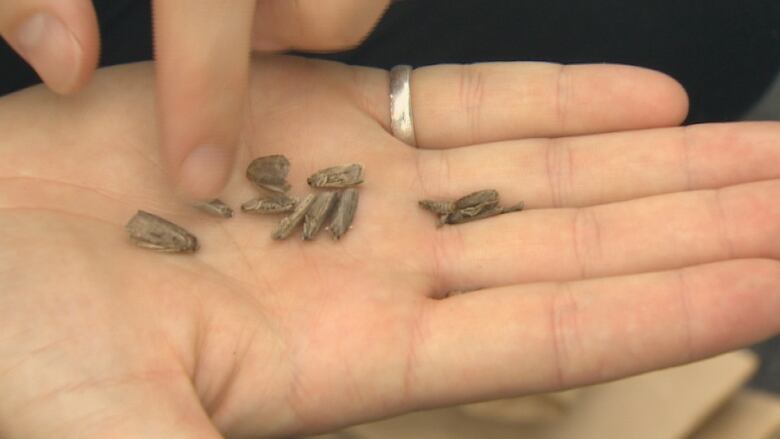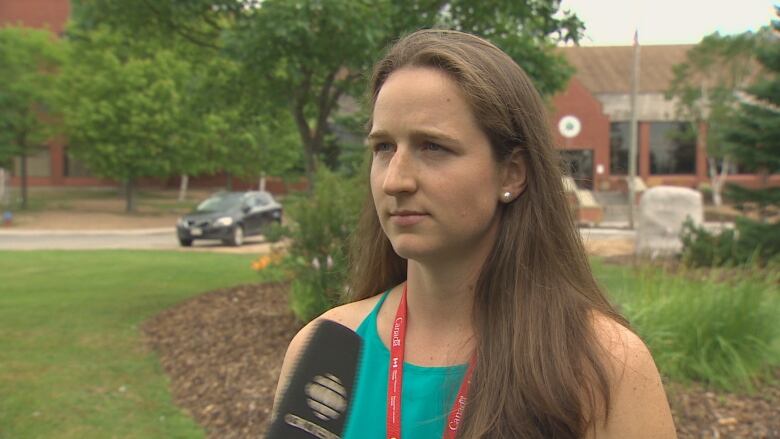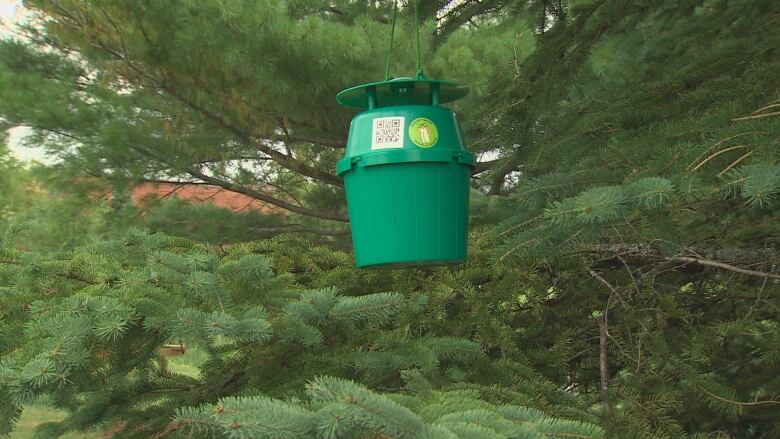Spruce budworm outbreak leads to call for more citizen scientists
Emily Owen director of the Budworm Tracker program is asking for volunteers in central N.B.

A New Brunswick biologist with the Department of Natural Resources Canada is keeping an eye on a spruce budworm outbreak in Quebec, and she's looking for more data from citizens in central New Brunswick.
"Currently in Quebec there is an outbreak that spread from 4 million hectares to 6 million hectares, and to put that in perspective we have about 6 million hectares in New Brunswick," said Emily Owens, the program director for the Budworm Tracker program.
- Budworm Tracker program recorded 'unheard of' 90 per cent return rate on data
- Spruce budworm study aided by citizen science program
The Budworm Tracker program relies on volunteer citizens to collect the moths and submit the data.
Since a potential outbreak last month in Campbellton, they have seen a spike in other parts of the province as well.

An outbreak ofspruce budwormcan be deadly for trees.
"Spruce budworms are some of the most severe pests in Eastern Canada when they defoliate trees. They will eat this years foliage and last years foliage and after four or five years, can cause tree fatality," said Owens.

" We also measure the wings. If they're smaller, we suspect they come from an out breaking area and locals maybe slightly bigger," said Owens.
Owens said smaller moths migrate because of scarcity of food and larger moths grow because they have little competition for food.
The BudwormTracker program started in 2015 and hasexpanded to 400 traps across Eastern Canada and parts of Maine.
Owens said they're always looking for volunteers and the expectations placed on the citizen scientists areminimal, a collection of bugs caught in the trap anywhere from one to three times a week.
"We're always looking for volunteers and would like to fill in the gaps in central New Brunswick where very few people live," said Owens.












_(720p).jpg)


 OFFICIAL HD MUSIC VIDEO.jpg)
.jpg)



























































































